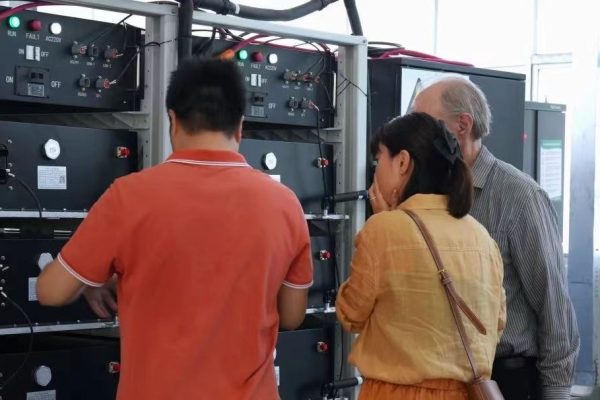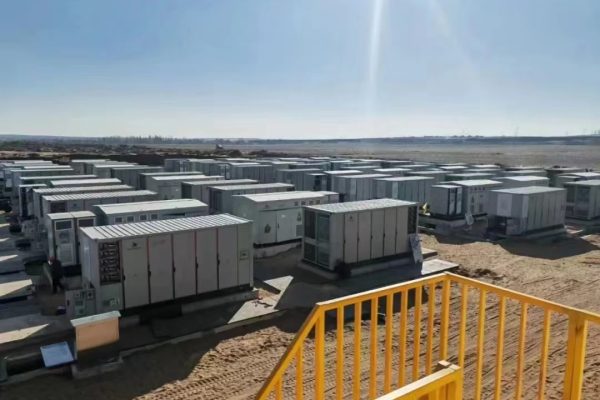As EV charging stations and energy storage systems (ESS) grow more integrated, engineers and investors face a critical technical choice: DC-coupled or AC-coupled architecture?
Both approaches can successfully combine solar PV, battery storage, and EV charging, but each has distinct trade-offs in terms of efficiency, control, cost, and scalability.
This article breaks down the key differences between DC-coupled and AC-coupled systems, compares their pros and cons, and provides guidance for choosing the right configuration for commercial and industrial (C&I) EV + Storage projects.
1. Understanding the Two Architectures
1.1 AC-Coupled Systems
In an AC-coupled setup, the PV system and the battery are connected on the AC side of the grid.
Each has its own inverter:
- PV inverter converts DC from solar to AC.
- Battery inverter (or hybrid PCS) converts battery DC to AC.
- Both connect to the same AC bus that powers EV chargers or the grid.
[PV Array] → [PV Inverter] → AC Bus ← [Battery Inverter] ← [Battery Pack]
↓
[EV Chargers]
Key trait: Multiple AC conversions between PV → AC → Battery → AC.
1.2 DC-Coupled Systems
In DC-coupled setups, PV and batteries share the same DC bus, connected through a hybrid inverter or DC/DC converter.
Key trait: Fewer energy conversions — PV directly charges the battery without first converting to AC.
2. Efficiency Comparison
AC-Coupled
Each energy path involves two or more conversions:
- PV DC → AC → Battery DC → AC → Load
Typical round-trip efficiency: 85–90%
DC-Coupled
PV charges battery directly in DC, requiring only one DC→AC conversion for output.
Round-trip efficiency: 92–97%
⚙️ Conclusion: DC-coupled systems are 3–7% more efficient overall — a significant advantage for high-cycling ESS applications like EV charging.
3. Cost and Installation Factors
| Aspect | AC-Coupled | DC-Coupled |
|---|---|---|
| Inverters | Separate PV & battery inverters | One hybrid inverter |
| Cabling | More AC wiring | Simplified DC bus |
| Installation Cost | Higher | Lower |
| Retrofit Capability | Easier to add storage | Complex retrofit |
| Initial Investment | Moderate | Lower for new systems |
Summary:
- AC coupling is more flexible for existing sites with PV already installed.
- DC coupling is more cost-efficient for new integrated projects (PV + ESS + EV).
4. Energy Flow and Control
AC-Coupled Control
Each inverter operates independently, coordinated by an Energy Management System (EMS).
- Requires precise synchronization on the AC bus.
- EMS must manage charge/discharge timing to avoid backfeeding issues.
DC-Coupled Control
Centralized control through one hybrid inverter/EMS simplifies management.
- PV output can go directly to battery or load.
- Easier to implement smart algorithms for maximum self-consumption.
🧠 Insight: DC-coupled systems give finer control over power flow and are better suited for AI-based energy optimization in smart EV hubs.
5. Grid Interaction and Flexibility
| Feature | AC-Coupled | DC-Coupled |
|---|---|---|
| Grid Support Functions | Excellent (independent inverters) | Limited (depends on PCS firmware) |
| Retrofit Use | Ideal for adding batteries to grid-tied PV | Best for new installations |
| Parallel Operation | Easier across multiple devices | Requires careful DC bus design |
| Compliance (UL/IEC) | More established | Still evolving in some markets |
If the system’s primary goal is grid export or peak shaving, AC-coupled is generally easier to integrate.
If the goal is on-site consumption and efficiency, DC-coupled delivers better performance.
6. Application Scenarios
6.1 AC-Coupled: Retrofit and Grid Services
- Existing PV plant wants to add storage
- EV charging site with grid participation (demand response, VPP)
- Easier regulatory compliance for grid-tied systems
Example:
A commercial parking facility adds a 250 kWh battery and bidirectional inverter to manage load peaks from existing PV and EV chargers.
6.2 DC-Coupled: New Integrated Charging Stations
- Greenfield EV + PV + ESS projects
- Sites prioritizing energy efficiency and solar utilization
- Microgrids and off-grid systems
Example:
A 200 kW PV + 300 kWh ESS station in Southeast Asia uses a DC-coupled hybrid PCS.
Result: 4% higher solar utilization and shorter ROI due to fewer conversion losses.
7. Impact on EV Charging Performance
EV fast chargers operate in DC internally, so pairing them with a DC-coupled battery reduces conversion steps.
Benefits:
- Faster charging response
- Higher power stability
- Less stress on grid connection
- Compatible with future V2G (Vehicle-to-Grid) architectures
🔋 For high-power EV charging (100–350 kW per stall), DC coupling ensures smoother energy flow and better instantaneous power control.
8. Maintenance and Reliability
AC-Coupled
- Easier inverter replacement
- More components = more potential failure points
- Proven standard in most markets
DC-Coupled
- Fewer inverters and cables → lower maintenance needs
- Centralized control simplifies operation
- Requires precise commissioning and thermal management
9. Safety and Compliance
Both architectures must meet strict standards like:
- IEC 62933 / UL 9540 (ESS safety)
- IEC 62109 / UL 1741 (inverter safety)
- IEC 61850 / MODBUS / CAN (communication protocols)
Safety Tip:
DC-coupled systems carry higher DC voltage, requiring robust isolation, grounding, and insulation monitoring.
For public charging hubs, AC-coupled systems may offer simpler certification paths with local utilities.
10. Cost–Benefit Snapshot
| Factor | AC-Coupled | DC-Coupled |
|---|---|---|
| Energy Efficiency | 85–90% | 92–97% |
| Initial Cost | Medium | Lower |
| Retrofit Friendly | ✅ Yes | ❌ No |
| Control Simplicity | Medium | High |
| Grid Export | Easy | Complex |
| Best Use Case | Retrofit PV + ESS | New integrated PV + EV + ESS |
11. Emerging Trend: Hybrid Architectures
Many new C&I charging stations now adopt hybrid systems that combine both approaches:
- DC-coupled PV + battery for efficiency
- AC grid-tied interface for export and demand control
This hybrid topology delivers:
- Maximum solar utilization
- Grid stability support
- Simplified certification
Example:
A 1 MW EV charging plaza in Europe uses DC-coupled PV/ESS for on-site power and AC coupling for grid participation.
Result: 6% higher efficiency and reduced demand charges by 35%.
12. Choosing the Right Architecture
When deciding between AC and DC coupling, consider:
| Project Factor | Recommended Option |
|---|---|
| Existing PV system | AC-Coupled |
| New greenfield site | DC-Coupled |
| Limited grid connection | DC-Coupled |
| High grid service participation | AC-Coupled |
| Focus on maximum efficiency | DC-Coupled |
| Ease of certification | AC-Coupled |
🧭 Rule of Thumb:
- AC coupling = retrofit and flexibility.
- DC coupling = efficiency and new builds.
13. Future Outlook
As EV infrastructure expands and battery prices fall, more systems will favor DC coupling for its compactness and energy efficiency.
However, hybrid (AC + DC) models will dominate large commercial projects needing both flexibility and compliance.
Technological enablers include:
- Next-gen bidirectional hybrid inverters
- High-voltage DC buses (>1000V) for ultra-fast charging
- Smarter EMS algorithms integrating PV, ESS, and EV loads
Both AC-coupled and DC-coupled systems are valid approaches to integrating energy storage into EV charging infrastructure — the best choice depends on your project’s goals, grid environment, and existing assets.
✅ Key Takeaways:
- DC coupling offers higher efficiency and lower installation cost for new sites.
- AC coupling offers simplicity and easier compliance for existing PV upgrades.
- Hybrid topologies combine the strengths of both for large-scale EV charging hubs.
As the EV ecosystem evolves, understanding these architectures helps buyers, installers, and investors design systems that are cost-effective, scalable, and future-ready.









